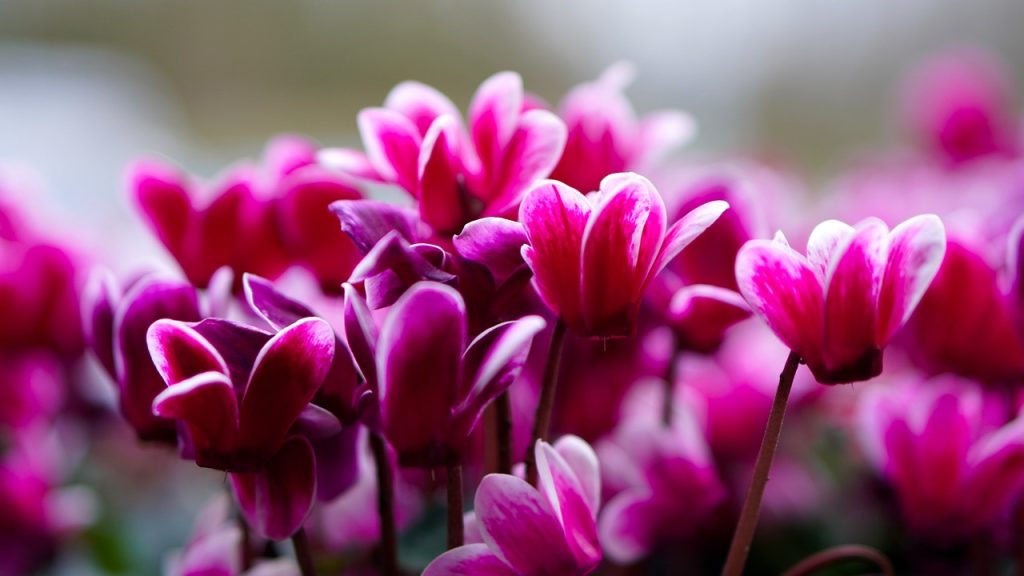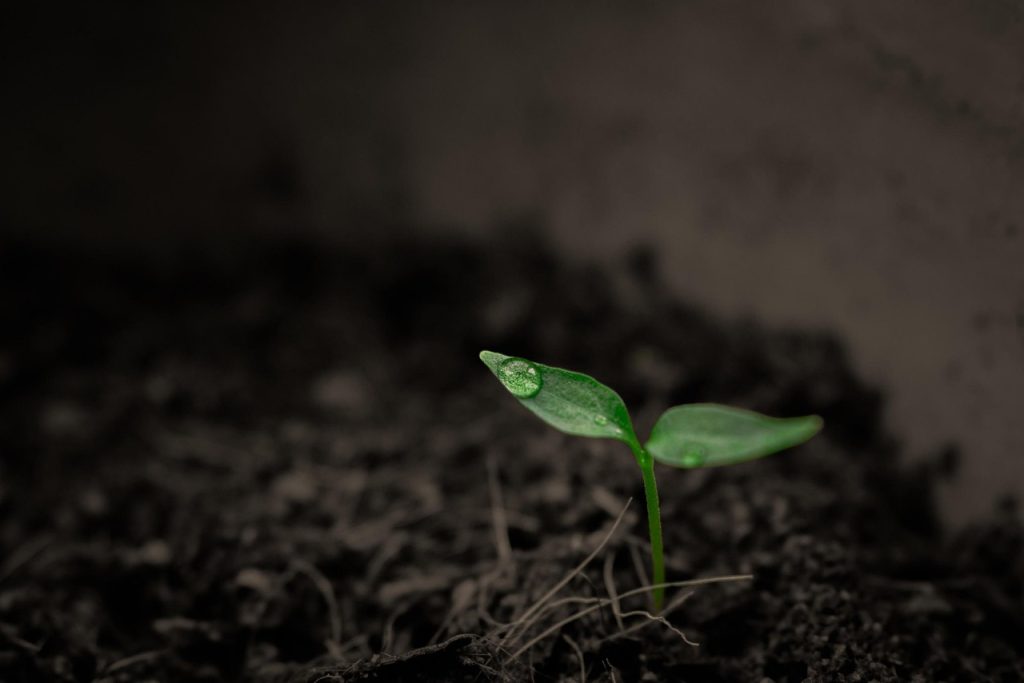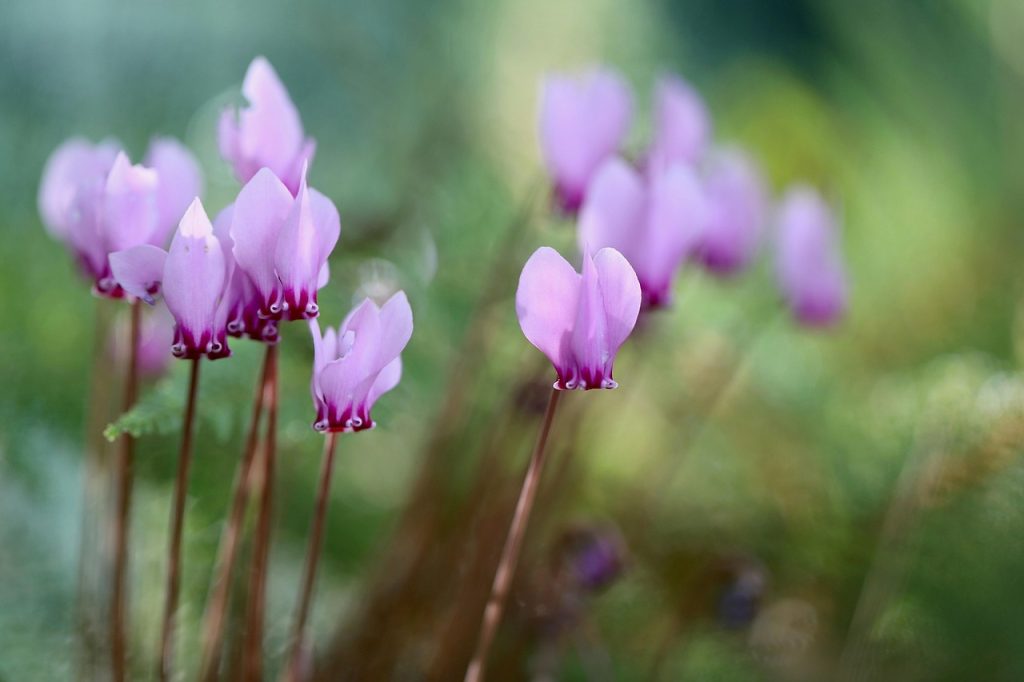Cyclamen plants are loved for their stunning, butterfly-like flowers and heart-shaped leaves, making them a beautiful addition to any indoor or outdoor space. However, caring for cyclamen plants can be tricky if you’re not familiar with their needs. In this guide, we’ll cover everything you need to know about how to care for cyclamen plants, including watering, lighting, temperature, repotting, and more, so your plants stay healthy and blooming all season long.
Understanding Cyclamen Plants
Cyclamen are tuberous perennials native to the Mediterranean region and parts of Europe. These plants typically bloom in cooler months, producing delicate pink, white, red, or purple flowers. After the blooming period, cyclamen enter dormancy, which is often mistaken for plant death. Understanding this cycle is key to proper cyclamen plant care.

Light Requirements
Cyclamen prefer bright, indirect light. Too much direct sunlight can scorch their leaves, while too little light can hinder blooming.
- Indoors: Place your cyclamen near a north- or east-facing window.
- Outdoors: Keep them in partial shade or filtered light areas.
If you’re growing them indoors, avoid keeping them under harsh artificial lights or in overly dark corners.
Watering the Right Way
Watering is one of the most crucial aspects of cyclamen care. Overwatering can cause tuber rot, while underwatering can lead to wilted leaves.
- Water the plant when the soil feels dry to the touch, but before it becomes bone dry.
- Always water from below by placing the pot in a saucer of water and letting the plant absorb moisture through the drainage holes for 15–20 minutes.
- Avoid getting water on the crown or leaves to prevent fungal issues.
During dormancy (usually in summer), reduce watering significantly, just enough to keep the tuber from drying out completely.
Temperature and Humidity
Cyclamen thrive in cooler temperatures between 50–65°F (10–18°C). High heat or direct sunlight can stress the plant and cause premature dormancy.
- Keep the plant away from heaters, radiators, and warm drafts.
- If your indoor air is dry, consider using a humidity tray or misting nearby (not directly on the plant).
Proper temperature and humidity encourage healthy blooms and longer flowering periods.
Soil and Potting
Cyclamen prefer well-draining, slightly acidic soil. A mix of peat, perlite, and potting compost works well.
- Always ensure the pot has good drainage holes.
- Repot your cyclamen every two years, after the dormancy period, using fresh soil and a slightly larger pot if necessary.
When repotting, make sure the tuber sits halfway above the soil surface to prevent rot.

Fertilizing Cyclamen Plants
Feed your cyclamen with a balanced liquid fertilizer every 2–3 weeks during the active growing and blooming period (fall to spring).
- Avoid high-nitrogen fertilizers as they promote leafy growth instead of flowers.
- Stop fertilizing when the plant starts to go dormant.
Regular feeding supports vibrant blooms and healthy leaves.
Dormancy Period
One of the most misunderstood aspects of cyclamen plant care is the dormancy phase. After flowering, the leaves will yellow and die back; this is normal!
Here’s what to do:
- Reduce watering gradually.
- Keep the pot in a cool, dry place.
- Do not fertilize during this time.
- After 2–3 months, when new shoots appear, move the plant back to a bright, cool spot and resume regular watering.
This rest period is essential for the next blooming cycle.
Common Problems and Solutions
| Problem | Cause | Solution |
|---|---|---|
| Yellowing leaves | Overwatering or heat stress | Reduce watering and move to a cooler location |
| No flowers | Insufficient light or too much warmth | Provide bright, indirect light and cooler temps |
| Mold or fungus | Poor air circulation or wet leaves | Improve airflow and avoid overhead watering |
| Wilting | Root rot or dehydration | Check roots; repot if soggy, or water if too dry |
Propagation of Cyclamen
Cyclamen are most commonly propagated through seed sowing or dividing tubers.
- From seeds: Sow seeds in moist soil during summer dormancy and keep them in a cool, shaded spot until they sprout.
- From tubers: Carefully divide mature tubers during repotting. Ensure each section has a healthy bud before planting.
Propagation requires patience but can reward you with multiple thriving plants.

Tips for Long-Lasting Blooms
- Deadhead spent flowers regularly to encourage new blooms.
- Keep the soil moist but never soggy.
- Rotate the pot occasionally for even growth.
- Maintain consistent cool temperatures for longer flowering periods.
FAQs About Cyclamen Care
Yellowing leaves usually mean overwatering or heat stress. Let the soil dry out and move your plant to a cooler location.
In mild climates, yes. Cyclamen can grow outdoors in shaded, cool areas with well-draining soil. In colder regions, they are best kept indoors.
Water when the top inch of soil feels dry, and always water from the bottom to protect the crown from rot.
Cyclamen typically bloom in fall and winter, resting during the warmer summer months.
Yes, as long as the temperature remains cool (around 60°F/15°C) and they receive bright, indirect light.
Final Thoughts
Cyclamen plants can be a stunning addition to your indoor garden if you understand their seasonal rhythm. Knowing how to care for cyclamen plants, from proper watering to managing dormancy, ensures your plant will bloom beautifully year after year. With the right balance of light, moisture, and temperature, these charming plants will bring life and color to your home during the cooler months.